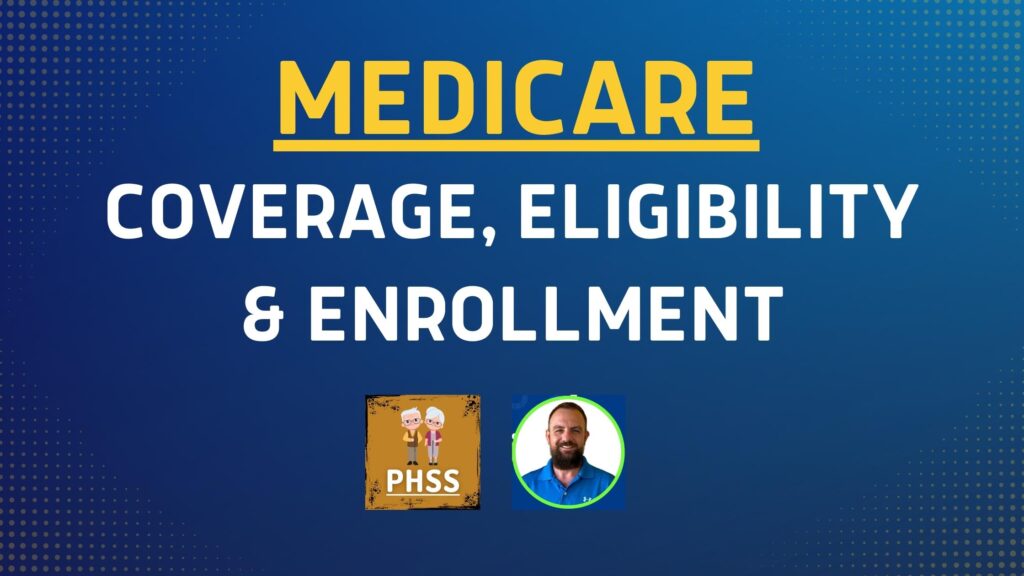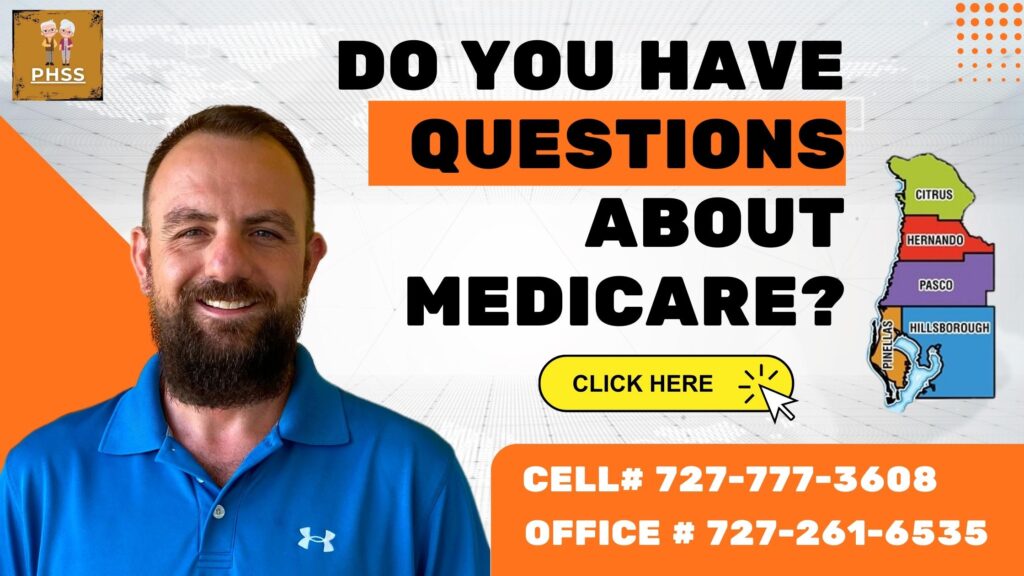Medicare Coverage, Eligibility & Enrollment

Medicare is a federally funded health insurance program that primarily serves individuals aged 65 and older, as well as some younger individuals with certain disabilities and diseases. Established in 1965, it has played a pivotal role in providing health coverage to millions of Americans, helping them afford healthcare services. The article ” Medicare Coverage, Eligibility & Enrollment” explains each of the areas for people who are new or as a refresher for those who already have it.
It is my intention to answer most of your questions in this article, but if I miss something please email me at daniel@pascohernandoseniorservices.org and I will answer your question.
What is Medicare?
Medicare is not a single program but is divided into four parts, each of which covers different aspects of healthcare:
Part A, also known as hospital insurance, covers inpatient hospital stays, care in a skilled nursing facility, hospice care, and some home healthcare.
Part B, or medical insurance, covers certain doctors’ services, outpatient care, medical supplies, and preventive services.
Part C, also known as Advantage Plan, is an alternative to Part A and B and is offered by private insurance companies. It often includes additional services such as vision, dental, hearing, and wellness programs.
Part D, the prescription drug coverage, helps cover the cost of prescription medications.
Who can sign up for Medicare?
Most people become eligible when they turn 65. However, younger individuals with disabilities and those with End-Stage Renal Disease (permanent kidney failure requiring dialysis or a transplant) are also eligible.
You might be eligible for Part A at no cost because of the following reasons?
- You have 40 quarters in Social Security/Medicare-covered employment
- You qualify through the work history of a current, former, or deceased spouse
If you don’t have 40 quarters or you don’t qualify because of a current, former, or deceased spouse you might be able to buy Part A coverage. If this is your case please contact the Social Security Administration for further details.
When can someone sign up for Medicare?
If you’re already getting benefits from Social Security or the Railroad Retirement Board (RRB), you’ll automatically get Part A and Part B starting the first day of the month you turn 65.
If you’re under 65 and have a disability, you’ll automatically get Part A and Part B after you get disability benefits from Social Security or certain disability benefits from the RRB for 24 months.
If you have ALS (amyotrophic lateral sclerosis, also called Lou Gehrig’s disease), you’ll get Part A and Part B automatically the month your Social Security disability benefits begin.
If you’re close to 65, but NOT getting Social Security or Railroad Retirement Board (RRB) benefits or you don’t have a qualifying disability, you’ll need to sign up. Visit ssa.gov/benefits/medicare to apply for Part A and Part B. You can also contact Social Security 3 months before you turn 65 to set up an appointment.
There are specific enrollment periods.
- Initial Enrollment Period (IEP) starts three months before your 65th birthday and extends for seven months.
- General Enrollment Period (GEP) from January 1 to March 31 each year, but late enrollment penalties may apply.
There are also Special Enrollment Periods (SEPs) that allow individuals to sign up outside the regular enrollment periods under certain conditions, such as when they lose group health insurance from an employer.
For those considering Medicare Advantage (Part C) or Prescription Drug Plan (Part D), the Annual Election Period (AEP), also known as Open Enrollment, occurs from October 15 to December 7 each year.
Your Medicare Options?
Original Medicare
Original Medicare includes Medicare Part A (Hospital Insurance) and Part B (Medical Insurance).
- You can join a separate drug plan to get drug coverage (Part D).
- You can use any doctor or hospital that takes Medicare, anywhere in the U.S.
- To help pay your out-of-pocket costs (like your 20% coinsurance), you can also shop for and buy supplemental coverage.
Medicare Advantage (also known as Part C)
Advantage plans are approved plans from a private company that offers an alternative to Part A and B for your health and drug coverage. These “bundled” plans include Part A, Part B, and usually Part D coverage all in one.
- In most cases, you can only use doctors who are in the plan’s network.
- In many cases, you may need to get approval from your plan before it covers certain drugs or services.
- Plans may have lower out-of-pocket costs.
- Plans may offer some extra benefits like vision, hearing, and dental services.
Choosing which way to take your coverage is a personal decision that’s based on your lifestyle and health. What’s right for your spouse or neighbor might not be right for you.
Conclusion
Understanding Medicare is crucial for anyone approaching retirement age or with special healthcare needs. It provides a safety net, helping to ensure that healthcare remains affordable and accessible. However, the complexity of the program means that potential enrollees should take the time to understand its different aspects fully.
Medicare plays an indispensable role in America’s healthcare landscape, providing coverage for a vast range of health needs to millions of citizens. Ensuring you are aware of its intricacies can help you optimize your healthcare journey, secure in the knowledge that you are suitably covered.



